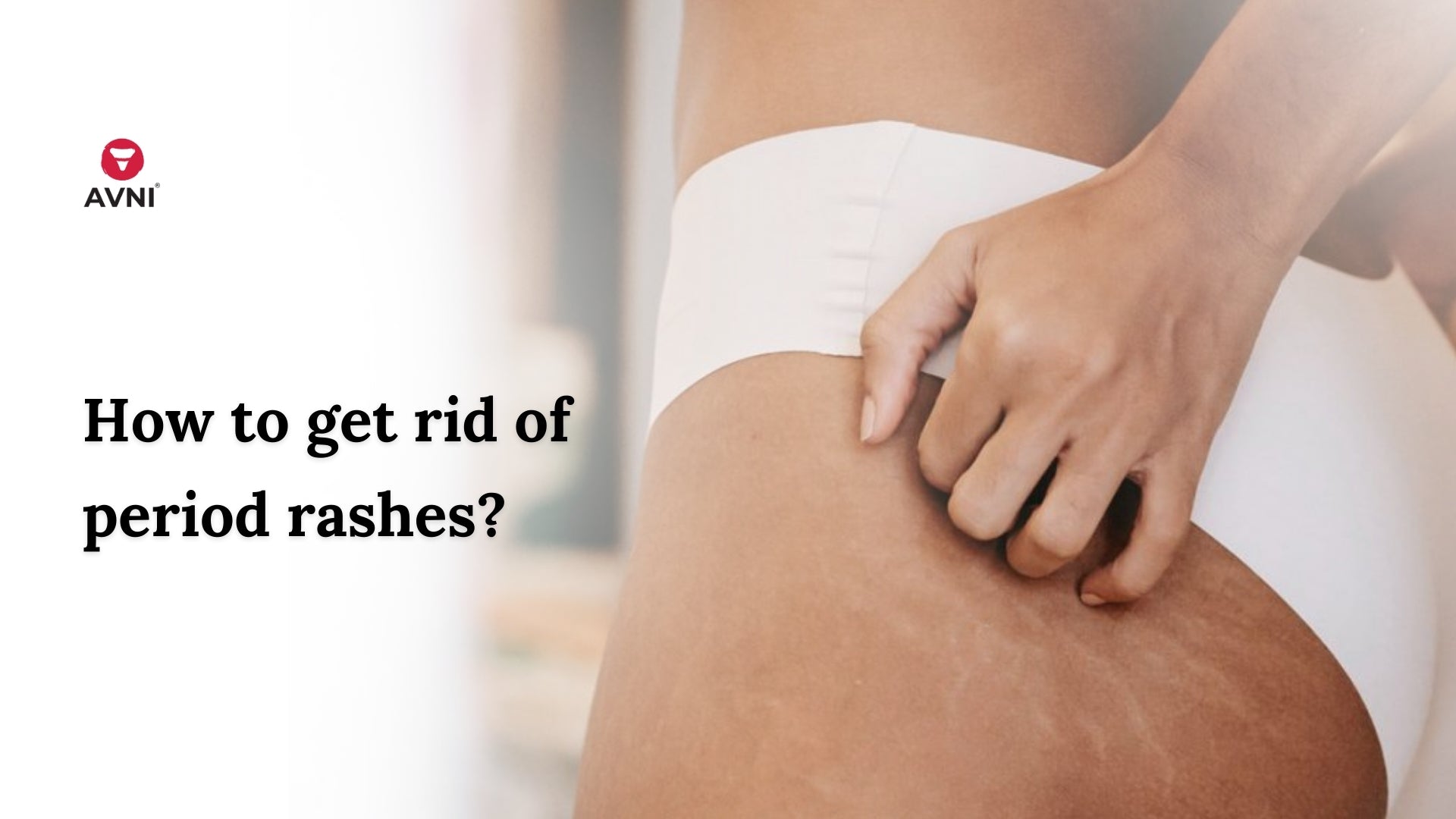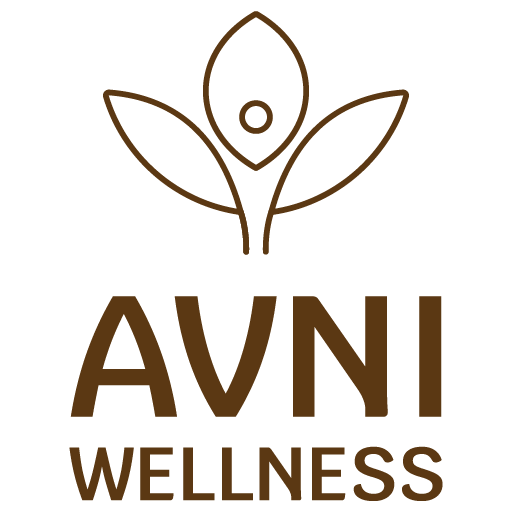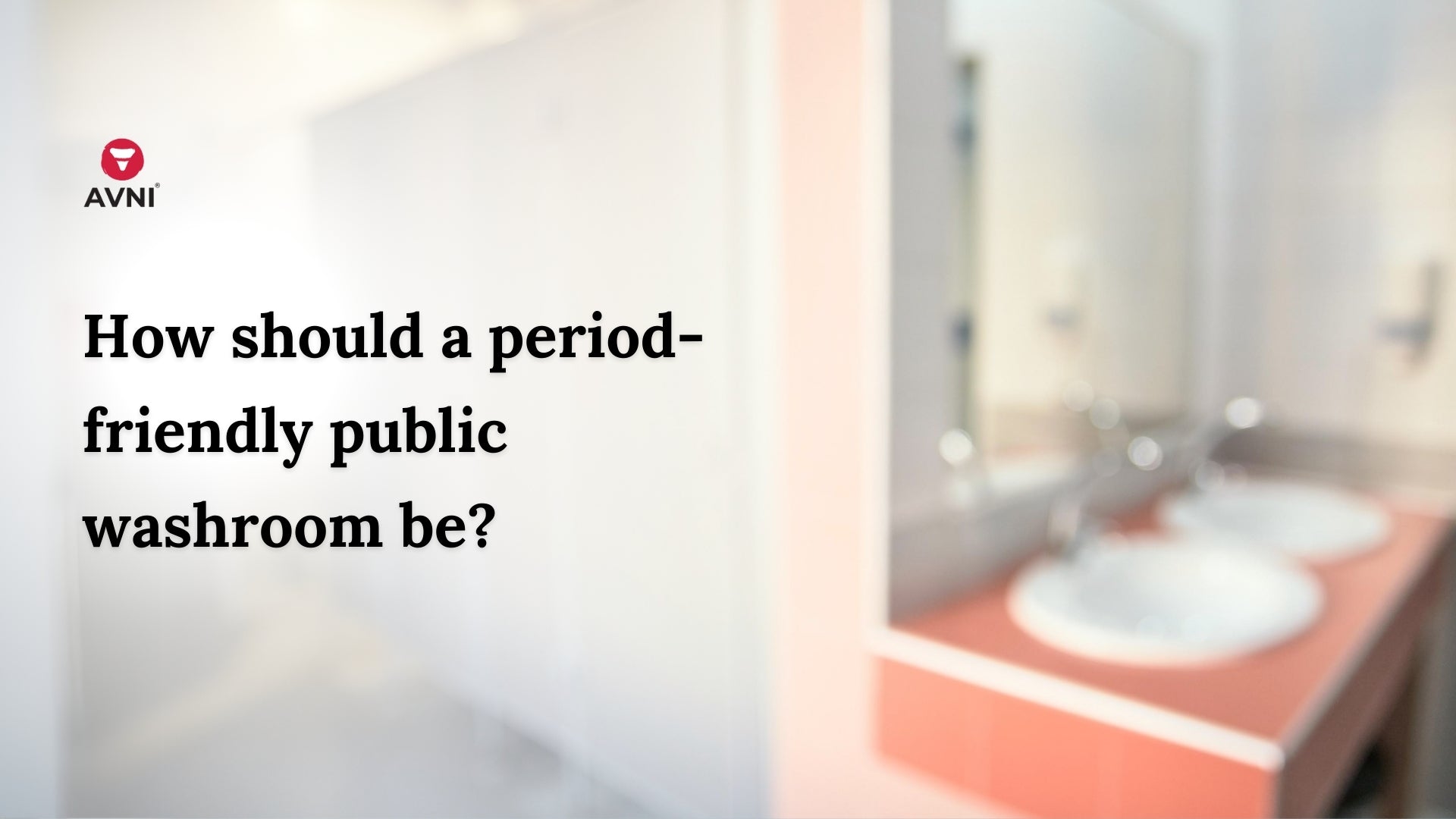
How to get rid of period rashes?
Your period was going well. But suddenly you got a mean rash between your legs. You look down and wonder what is wrong. Then you see a pink or red patch on your skin. Ah! The most uncomfortable period rash has set in. Can you recognize this?
This blog is talking about the dreaded period skin irritation — commonly known as a period rash. Whether it's the itching, pain, or swelling beneath there — it can happen to any woman. The question is — How to get rid of period rashes?
So let's get to know some treatment methods that can have long-lasting results for the good! Yes, there are some methods that can save you from an unwanted period rash.

How do you get a period rash?
The thing about traditional sanitary pads is that the material used is usually plastic which does not allow air circulation. At the same time — the pad is placed against your skin for long hours. It becomes moist due to sweat and menstrual flow.
All of this leads to inflammation, redness, or swelling resulting in rashes.
Thus, it is advised to use pure cotton-made sanitary pads like Avni natural pads that are made from 100% organic cotton.
Related read: What is a period rash? Why do you get them?
Ways to prevent period rashes
Now, finally. The main stuff! Periods are not at all fun in the sun especially when you have period rashes. Let's be real… period rashes suck. But they don't have to. Here are some tips to prevent those nasty blemishes that can happen during your time of the month.
#1 Keep it moisturized
Maintain a moist environment beneath. The likelihood of skin rashes increases if the sanitary pad repeatedly comes into contact with the dry skin. You can use any mild moisturizer such as simple coconut oil, fragrance-free moisturizers, or anti-chafing creams on the rash (baby diaper rash creams also work well). Just make sure you apply any moisturizer on your thighs and not near or on your vulva region.
Anti-chafing creams are specially designed creams to reduce friction and prevent rashes. These creams are available over-the-counter at your nearby pharmacy or drug store.
Performing a patch test on your arm or consulting your gynecologist first will allow you to see if these creams are suitable for you. Keep an eye out for any allergic reactions, such as itching or burning. As long as there is no reaction to these creams, you may use them regularly when necessary.
Related read: Is soap good for your intimate hygiene?
#2 Opt for cotton panties
The second is to wear underwear made of pure cotton fabric as it creates less friction, therefore reducing the chances of rashes. The natural fibers and breathable material of cotton are much more likely to help prevent this from happening in the first place. Not only does it wick moisture away from your body and keep you dry, but it also allows air to flow freely and keep you cool during those hot summer months or when you're working out. It's important to wear comfortable underwear that fits well and moves with you throughout the day to prevent period rashes firsthand.
#3 Change your sanitary napkin
The third is that you keep changing your pad frequently every 6 to 8 hours so that it does not become too moist and there is no irritation.
A big part of preventing rashes from sanitary pads is the way you change them at regular intervals.
You should be changing your pad every six to eight hours at least and always before going to bed. It is advisable to use lukewarm water or alcohol-free water-based intimate wipes for cleaning the vulva and dry it thoroughly before using a new pad.
Usually, your rashes should disappear once you have stopped wearing pads. If they don't go away, you can talk to your gynecologist.
Related read: Tips to choose the right intimate wipes for yourself
#4 Try a sitz bath
You can take a sitz bath if a pustule (patch of skin that's full of a yellowish fluid called pus) or an abscess has been formed. Now, what is a sitz bath? A sitz bath is a warm soothing soak for your perineal or bottom area (area between the legs including your anus, vagina, or scrotums).
Sitz bath kits can be purchased from any local drug store. Take a plastic tub and fill it with warm water and a sitz bath. You may sit under the tub for 5 to 10 minutes to heal your thigh rashes. Pad clean and dry your thighs once you are done with the sitz bath. You’ll feel the difference.
#5 Choose the right product
Make sure that you only use unscented sanitary pads because scented napkins do have quite a lot of chemicals that could also lead to irritation and rashes beneath.
Lastly, if you are still having period rashes despite all the above, it is time to switch your sanitary pad brand or try other options such as reusable cloth pads or menstrual cups.
And please don't be afraid to use these options because you are scared of losing your virginity. You can read more to clear your doubts regarding the usage of menstrual cups and tampons.

Related reads:
- What is a period cup?
- Insert a Menstrual Cup With Ease: Folding Techniques
- Top 7 Menstrual Cup Folding Techniques
- Organic pads Vs Regular pads: Which is better?
What can you do if period rashes persist?
And if you are still getting rashes despite all this, then you should consult a gynecologist.
Rash symptoms can also be associated with herpes or a vaginal yeast infection in some cases. Your doctor may prescribe a medicated topical cream to ease the itching and inflammation depending on the severity of the rash.
Remember that you should treat period rashes as soon as you observe one because an untreated rash can also convert into something severe.
Quick summary of the entire article
The pain associated with period rashes prevents you from performing routine tasks in a proper manner. Period rashes are more likely to occur when your sanitary pad or panty material is rubbing too hard against your skin so that the skin tears.
It is also possible for the period rash to become a bacterial or yeast infection if left untreated. Thus, it is advisable to treat such rashes as soon as possible!
Keeping your skin moisturized, wearing the right sanitary pad, changing sanitary
napkins on a timely basis, wearing cotton panties, and wearing loose and comfortable bottoms are just a few ways to prevent period rashes. Ultimately, Consult your doctor if your period rash persists even after following these methods.


Leave a comment
This site is protected by hCaptcha and the hCaptcha Privacy Policy and Terms of Service apply.